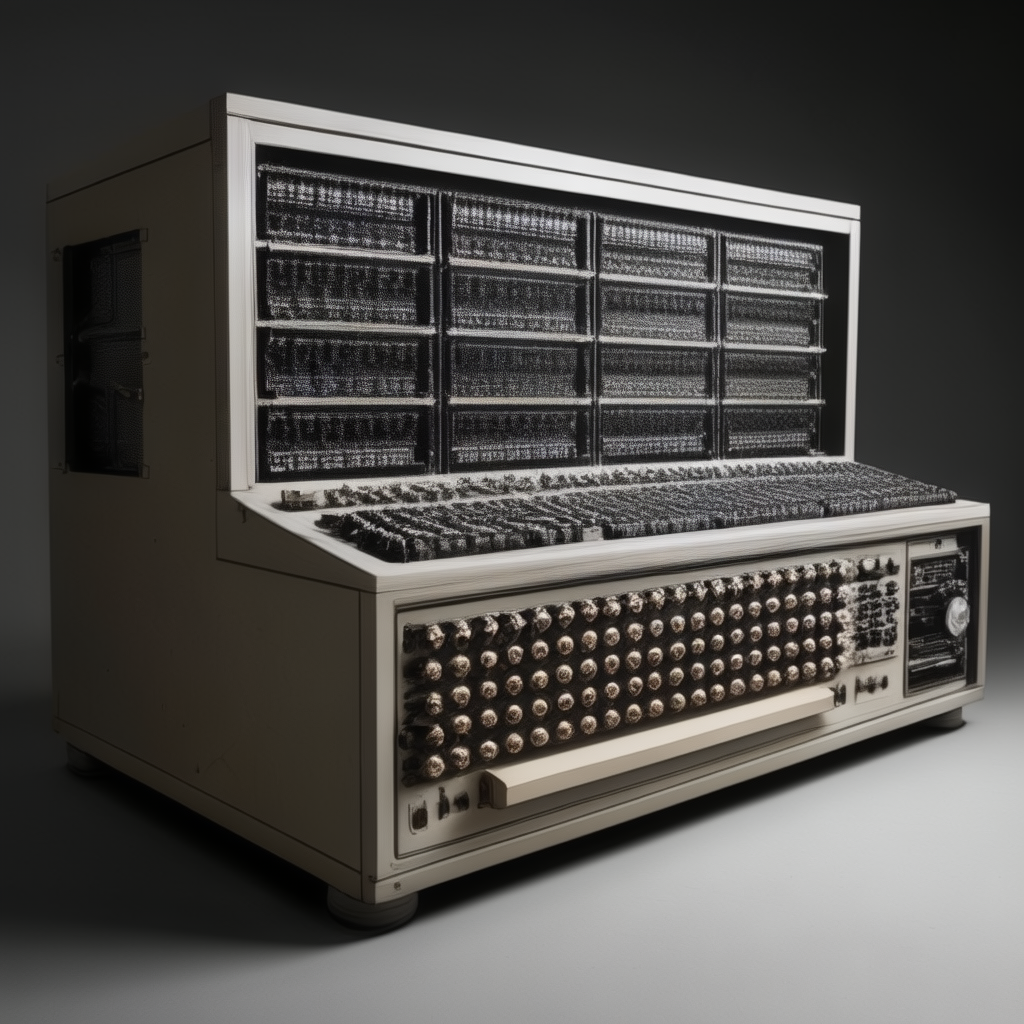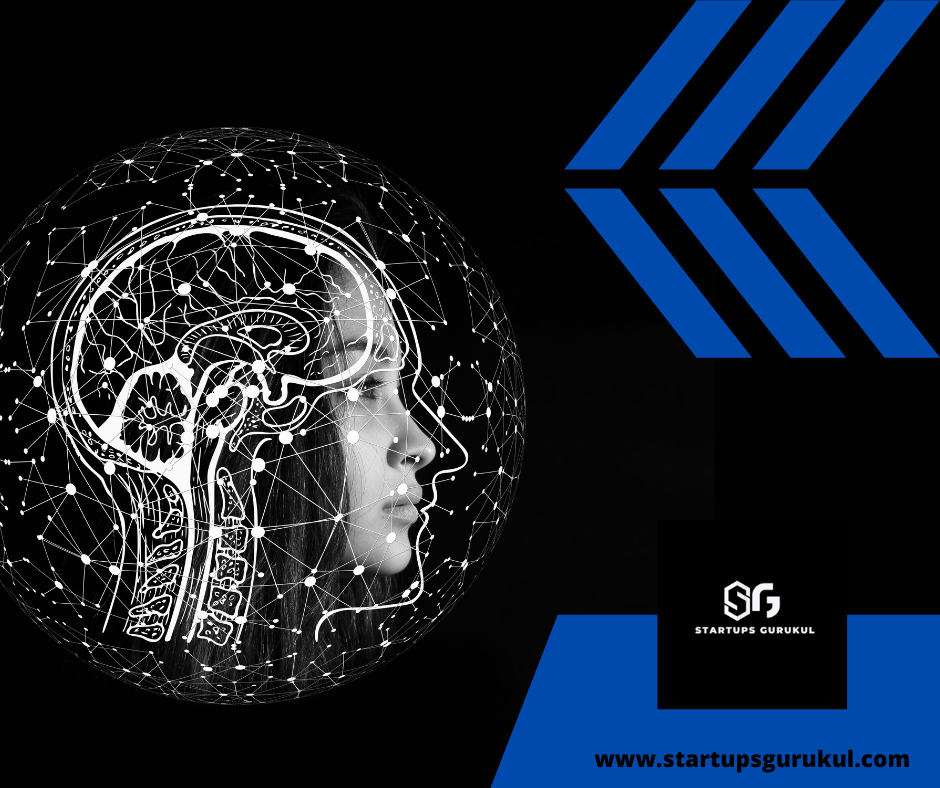In the annals of technological history, few milestones shine as brightly as the advent of the first operational programmable computer. This groundbreaking achievement marks a pivotal moment in the evolution of computing, laying the foundation for the digital age that would follow. In this exploration, we delve into the captivating tale of innovation, ingenuity, and perseverance that gave birth to the world’s first programmable computing machine.
The Birth of a Vision:
The journey towards the creation of the first operational programmable computer begins with a vision—a vision to harness the power of mathematics and logic to automate complex calculations and unlock new frontiers of human knowledge. In the early 20th century, luminaries such as Charles Babbage and Ada Lovelace laid the theoretical groundwork for programmable computing, envisioning machines capable of executing instructions to perform diverse tasks with unparalleled precision.
From Theory to Reality:
The realization of this vision emerged amidst the tumult of World War II, as nations raced to develop advanced technologies to gain strategic advantage. In 1943, in the heart of wartime Britain, a team of brilliant minds led by mathematician Alan Turing embarked on a clandestine project to construct a machine capable of breaking German codes—an endeavor that would culminate in the creation of the Colossus.
The Colossus:
Conceived as a top-secret project code-named “Colossus,” this revolutionary machine represented a quantum leap forward in computing technology. Designed by engineer Tommy Flowers and his team at the Government Code and Cypher School (GC&CS), the Colossus was the world’s first electronic, programmable digital computer, capable of rapidly deciphering encrypted messages with unprecedented speed and accuracy.
Unveiling the Marvel:
In December 1943, the Colossus Mark I roared to life, heralding a new era in computing history. Combining vacuum tubes, switches, and paper tape, this formidable machine boasted computational power far beyond anything previously conceived. Its ability to analyze vast volumes of data in real-time played a pivotal role in the Allied victory, helping to decode intercepted German communications and turn the tide of war.
Legacy and Impact:
The legacy of the Colossus extends far beyond its wartime achievements. Its design principles and technological innovations laid the groundwork for subsequent generations of computers, paving the way for the digital revolution that would transform every aspect of human society. From the ENIAC to the modern supercomputer, the lineage of programmable computing machines can be traced back to the pioneering work of Alan Turing, Tommy Flowers, and their visionary colleagues.
Reflections on Innovation:
The story of the first operational programmable computer serves as a testament to the power of human ingenuity, collaboration, and resilience in the face of adversity. It reminds us that great leaps forward often arise from the crucible of necessity, as brilliant minds unite to confront the challenges of their time. As we marvel at the achievements of the past, we are inspired to continue pushing the boundaries of possibility, seeking new horizons of discovery and invention in the endless quest for knowledge and understanding.
1. The Crucial Role of Cryptanalysis: In the midst of World War II, the Allied forces faced an urgent need to decipher encrypted enemy communications.
During World War II, cryptanalysis played a strategic role of paramount importance in military operations. Cryptanalysis refers to the science and art of deciphering encrypted messages, a task that became increasingly critical as nations engaged in clandestine communication efforts to protect their military secrets and strategies. Understanding the enemy’s encrypted communications provided a significant tactical advantage, allowing military leaders to anticipate enemy movements, disrupt supply lines, and thwart enemy attacks.
The impetus provided by the strategic importance of cryptanalysis during this pivotal period was instrumental in driving the development of advanced computing technologies. Here’s how:
- Complexity of Cipher Systems: The encryption systems used during World War II, such as the German Enigma machine, were incredibly sophisticated and employed complex cryptographic techniques. These cipher systems posed formidable challenges to traditional codebreaking methods, necessitating the development of more advanced computational tools and techniques to decipher them.
- Speed and Accuracy Requirements: The speed at which encrypted messages needed to be decrypted and analyzed during wartime was unprecedented. Traditional manual methods of codebreaking were simply too slow and labor-intensive to keep pace with the volume and urgency of intercepted communications. There was a pressing need for automated systems capable of processing vast amounts of data quickly and accurately, driving the demand for advanced computing technologies.
- Mathematical and Logical Complexity: Cryptanalysis requires a deep understanding of mathematical principles, logical reasoning, and pattern recognition. As cryptosystems became increasingly sophisticated, the complexity of the mathematical and logical problems involved in decrypting them grew exponentially. This necessitated the development of computational tools capable of performing complex mathematical operations and executing logical algorithms with precision and efficiency.
- Innovation and Collaboration: The urgency of the wartime context spurred unprecedented levels of innovation and collaboration among mathematicians, engineers, and scientists. Interdisciplinary teams were assembled to tackle the challenges of cryptanalysis, pooling their expertise and resources to develop novel approaches and technologies. This collaborative effort fostered a fertile environment for the exchange of ideas and the cross-pollination of knowledge, accelerating the pace of technological advancement.
- Technological Breakthroughs: The exigencies of wartime cryptanalysis catalyzed several technological breakthroughs that would have a lasting impact on the field of computing. The development of electronic computing machines, such as the Colossus, represented a quantum leap forward in computational capability, enabling rapid and efficient analysis of encrypted messages. These early computing machines laid the groundwork for subsequent generations of computers, paving the way for the digital revolution that would follow.
In summary, the strategic importance of cryptanalysis during World War II served as a catalyst for the development of advanced computing technologies. The need to decipher encrypted enemy communications quickly and accurately drove innovation, collaboration, and technological breakthroughs, laying the foundation for the modern era of computing. The lessons learned from this pivotal period continue to resonate in today’s rapidly evolving technological landscape, underscoring the transformative power of innovation and collaboration in the face of adversity.
2. Alan Turing’s Trailblazing Contributions:
Alan Turing, a towering figure in the fields of mathematics, cryptography, and computer science, left an indelible mark on the trajectory of human knowledge and technological innovation. His life and work are a testament to the power of intellect, creativity, and perseverance in shaping the course of history.
Early Life and Education: Born on June 23, 1912, in London, Alan Mathison Turing displayed exceptional intellectual aptitude from an early age. He excelled in mathematics and demonstrated a keen interest in problem-solving and logical reasoning. Turing’s academic prowess earned him a scholarship to study mathematics at King’s College, Cambridge, where he thrived under the mentorship of prominent mathematicians such as G.H. Hardy.
Theoretical Insights: Turing’s seminal contributions to the field of mathematics are manifold, but perhaps his most famous achievement is the concept of universal computation. In his groundbreaking paper “On Computable Numbers, with an Application to the Entscheidungsproblem” published in 1936, Turing introduced the concept of the Turing machine—a theoretical model of computation that laid the foundation for modern computer science. The Turing machine provided a formal framework for understanding the capabilities and limitations of computational systems, establishing the theoretical basis for the notion of algorithmic computation.
Cryptanalysis and Codebreaking: During World War II, Turing’s expertise in mathematics and logic proved invaluable to the Allied war effort. He played a pivotal role in breaking the German Enigma code—a feat that significantly shortened the war and saved countless lives. Turing’s work at Bletchley Park, the top-secret codebreaking facility, involved designing and implementing innovative cryptographic techniques and mechanical devices, including the Bombe—a machine used to decipher Enigma-encrypted messages. His contributions to cryptanalysis not only helped secure Allied victory but also laid the groundwork for the development of electronic computing machines.
Practical Innovations: Following the war, Turing turned his attention to practical applications of his theoretical insights. He joined the National Physical Laboratory (NPL) in the United Kingdom, where he worked on designing and building one of the world’s earliest electronic digital computers—the Automatic Computing Engine (ACE). While his vision for the ACE was never fully realized during his lifetime, his pioneering work laid the groundwork for subsequent generations of electronic computers.
Legacy and Impact: Alan Turing’s legacy looms large in the annals of computing history. His theoretical contributions to the fields of mathematics and computer science revolutionized our understanding of computation and laid the groundwork for the digital revolution that would follow. Turing’s insights into universal computation provided the theoretical framework for modern computers, while his practical innovations in cryptanalysis and computer design paved the way for the development of electronic computing machines. Beyond his scientific achievements, Turing’s life serves as a poignant reminder of the importance of intellectual freedom, diversity, and inclusivity in fostering innovation and advancing human knowledge.
In summary, Alan Turing’s remarkable life and groundbreaking work continue to inspire generations of mathematicians, scientists, and computer engineers. His legacy as a pioneering mathematician, cryptanalyst, and computer scientist underscores the transformative power of intellect, creativity, and perseverance in shaping the course of history and advancing human civilization.
3. Engineering Marvels: Designing the Colossus:
The creation of the Colossus machine stands as a testament to the technical ingenuity and engineering prowess of its designers and engineers. Developed during World War II at Bletchley Park in the United Kingdom, the Colossus represented a pioneering achievement in the realm of electronic computing. From the innovative use of vacuum tubes to the intricate wiring and circuitry, let’s delve into the design principles and technological innovations that made the Colossus a marvel of its time.
Innovative Use of Vacuum Tubes: One of the key technological innovations that set the Colossus apart was its reliance on vacuum tubes as electronic components. Vacuum tubes, also known as thermionic valves, served as the building blocks of early electronic computers, functioning as amplifiers and switches. The Colossus utilized thousands of vacuum tubes arranged in intricate configurations to perform complex calculations and cryptographic operations. This innovative use of vacuum tube technology allowed the Colossus to achieve unprecedented levels of computational speed and efficiency compared to earlier electromechanical machines.
Parallel Processing Architecture: The Colossus employed a parallel processing architecture—a revolutionary concept at the time—that enabled it to perform multiple calculations simultaneously. This parallelism was achieved by dividing complex cryptographic tasks into smaller subproblems and assigning them to different processing units within the machine. By harnessing the power of parallel processing, the Colossus was able to rapidly analyze vast volumes of encrypted data, significantly accelerating the codebreaking process and providing valuable intelligence to Allied forces.
Complex Wiring and Circuitry: The design of the Colossus involved intricate wiring and circuitry, meticulously crafted to ensure optimal performance and reliability. Skilled engineers and technicians painstakingly constructed the machine, carefully soldering thousands of electrical connections and meticulously routing wires to minimize signal interference and maximize computational efficiency. The complexity of the wiring and circuitry posed significant challenges in terms of maintenance and troubleshooting, but it was a testament to the dedication and expertise of the individuals involved in the Colossus project.
Specialized Peripherals and Interfaces: In addition to its core computational components, the Colossus featured specialized peripherals and interfaces tailored to the specific requirements of cryptanalysis. These included paper tape readers for inputting encrypted messages, magnetic tape drives for storing intermediate results, and teleprinter terminals for outputting decrypted plaintext. The seamless integration of these peripherals into the Colossus system facilitated the efficient processing and analysis of encrypted data, enabling cryptanalysts to decipher complex codes with unprecedented speed and accuracy.
Reliability and Robustness: Despite its complexity, the Colossus was engineered to be highly reliable and robust, capable of operating continuously for extended periods under challenging conditions. Stringent quality control measures were implemented throughout the manufacturing process to ensure the integrity and stability of the machine’s components. Additionally, redundant systems and fail-safe mechanisms were incorporated to minimize the risk of downtime and maximize operational uptime, essential considerations given the critical nature of the Colossus’s role in wartime codebreaking efforts.
In summary, the creation of the Colossus machine exemplifies the technical ingenuity and engineering prowess of its designers and engineers. From the innovative use of vacuum tubes to the parallel processing architecture, complex wiring, and specialized peripherals, every aspect of the Colossus’s design and construction was meticulously crafted to achieve unprecedented levels of computational power and efficiency. As a result, the Colossus stood as a testament to human ingenuity and played a pivotal role in Allied codebreaking efforts during World War II, ultimately contributing to the Allied victory and shaping the course of history.
4. Breaking the Enigma: Decoding the German Cipher: Journey into the world of wartime codebreaking and the pivotal role played by the Colossus in deciphering the infamous German Enigma machine.
The collaborative efforts of mathematicians, cryptanalysts, and engineers during World War II were instrumental in the Allied effort to crack seemingly unbreakable enemy codes, particularly the German Enigma code. This concerted endeavor brought together individuals from diverse backgrounds and expertise, each contributing their unique skills and insights to the collective goal of decrypting encrypted messages and gaining valuable intelligence.
1. Mathematicians: Mathematicians played a central role in developing the theoretical frameworks and analytical techniques necessary for cryptanalysis. Drawing upon principles from number theory, probability theory, and combinatorics, mathematicians devised sophisticated algorithms and mathematical models to analyze the structure of encrypted messages and identify patterns or vulnerabilities that could be exploited to break the code. Figures such as Alan Turing, Max Newman, and Gordon Welchman made seminal contributions to the field of cryptanalysis, developing innovative approaches that laid the groundwork for practical codebreaking efforts.
2. Cryptanalysts: Cryptanalysts were tasked with applying mathematical principles and analytical techniques to the practical task of decrypting enemy codes. Working in collaboration with mathematicians, cryptanalysts meticulously analyzed intercepted encrypted messages, searching for weaknesses or patterns that could provide clues to the encryption method used. Cryptanalysts employed a combination of manual techniques, such as frequency analysis and cribbing, along with automated methods using mechanical or electromechanical devices to expedite the codebreaking process. These efforts required patience, ingenuity, and attention to detail, as cryptanalysts grappled with the complexities of deciphering highly secure cryptographic systems.
3. Engineers: Engineers played a crucial role in translating theoretical insights into practical solutions by designing and constructing the mechanical and electronic devices used in cryptanalysis. Working closely with mathematicians and cryptanalysts, engineers developed innovative machines and systems tailored to the specific requirements of codebreaking. From the electromechanical Bombe used to crack the German Enigma code to the electronic Colossus used to decipher other types of encrypted messages, engineers leveraged cutting-edge technology and engineering principles to build the tools that enabled Allied cryptanalysts to achieve breakthroughs in codebreaking.
4. Collaborative Environment: The collaborative environment fostered at codebreaking facilities such as Bletchley Park in the United Kingdom facilitated the exchange of ideas and expertise among mathematicians, cryptanalysts, and engineers. Interdisciplinary teams were assembled to tackle the complex challenges of cryptanalysis, bringing together individuals with diverse skills and perspectives to solve problems collectively. This collaborative approach allowed for the rapid iteration and refinement of codebreaking techniques, leading to significant advancements in the field and ultimately enabling Allied forces to gain critical intelligence advantage over their adversaries.
5. Dedication and Determination: Above all, the collaborative efforts of mathematicians, cryptanalysts, and engineers were driven by a shared sense of dedication and determination to support the Allied war effort. Despite the immense challenges and pressures of wartime, individuals involved in codebreaking worked tirelessly and often under extreme secrecy to achieve their objectives. Their unwavering commitment to the cause, coupled with their collective expertise and ingenuity, proved decisive in cracking seemingly unbreakable enemy codes and contributing to Allied victory in World War II.
In summary, the collaborative efforts of mathematicians, cryptanalysts, and engineers during World War II epitomize the power of interdisciplinary teamwork and innovation in overcoming seemingly insurmountable challenges. Through their collective expertise, dedication, and determination, these individuals played a pivotal role in cracking enemy codes, unraveling the secrets of encrypted messages, and ultimately shaping the course of history.
5. The Impact of the Colossus on Wartime Strategy:
The strategic significance of the intelligence gathered through the efforts of the Colossus machine during World War II cannot be overstated. As the world’s first programmable electronic computer designed for cryptanalysis, the Colossus played a pivotal role in decrypting enemy communications and providing valuable insights that directly influenced Allied military operations. Let’s explore in detail how the intelligence gathered through the Colossus helped shape the course of the war:
1. Decrypting German Enigma Communications: The primary function of the Colossus was to decrypt encrypted messages sent using the German Enigma machine—a sophisticated cryptographic device used by the Axis powers to communicate securely. By deciphering intercepted Enigma-encrypted messages, the Colossus provided Allied cryptanalysts with invaluable intelligence regarding enemy troop movements, naval operations, and strategic plans. This intelligence enabled Allied commanders to anticipate enemy actions and adjust their own strategies accordingly.
2. Disrupting Enemy Communications: One of the most significant impacts of the intelligence gathered through the Colossus was the disruption of enemy communications. By decrypting and exploiting intercepted messages, Allied forces were able to disrupt Axis supply lines, sabotage enemy operations, and deceive enemy commanders. For example, the decryption of German naval communications allowed the Allies to intercept and sink numerous Axis supply ships, weakening the enemy’s logistical capabilities and hampering their ability to sustain military operations.
3. Gaining Critical Insights into Enemy Intentions: The intelligence gleaned from Colossus-generated decrypts provided Allied commanders with critical insights into enemy intentions and decision-making processes. By analyzing intercepted communications, cryptanalysts could discern patterns, identify trends, and infer the enemy’s strategic objectives. This intelligence helped Allied leaders make informed decisions about troop deployments, defensive positions, and offensive maneuvers, thereby maximizing the effectiveness of Allied military operations.
4. Shortening the Duration of the War: The intelligence advantage provided by the Colossus and other codebreaking efforts significantly shortened the duration of the war. By decrypting enemy communications and exploiting the resulting intelligence, Allied forces were able to gain a decisive edge over their adversaries, accelerating the pace of military operations and hastening the Allied victory. The timely interception of critical enemy messages allowed Allied commanders to preempt enemy attacks, outmaneuver Axis forces, and achieve strategic objectives with greater speed and efficiency.
5. Securing Allied Success in Key Battles: The intelligence gathered through the Colossus played a crucial role in securing Allied success in key battles and campaigns throughout the war. By providing advance warning of enemy movements and intentions, decrypts generated by the Colossus enabled Allied forces to plan and execute successful offensives, repel enemy counterattacks, and seize strategic objectives. From the D-Day landings in Normandy to the Battle of the Atlantic, the intelligence derived from Colossus-generated decrypts helped tilt the scales of victory in favor of the Allies.
In summary, the intelligence gathered through the efforts of the Colossus machine had a profound and far-reaching impact on Allied military operations during World War II. By decrypting enemy communications, disrupting enemy logistics, gaining critical insights into enemy intentions, and shortening the duration of the war, the Colossus helped shape the course of history and contributed significantly to the Allied victory. Its strategic significance underscores the vital role of cryptanalysis and intelligence gathering in modern warfare, highlighting the importance of technological innovation and interdisciplinary collaboration in achieving military success.
6. Legacy and Evolution: From Colossus to Modern Computing:
The legacy of the Colossus machine extends far beyond its wartime achievements, leaving an indelible mark on the trajectory of computing technology and shaping the evolution of modern computers. From its innovative design principles to its groundbreaking technological innovations, the Colossus laid the groundwork for subsequent generations of computing machines, influencing everything from the pioneering efforts of the ENIAC to the development of contemporary supercomputers. Let’s delve into how the legacy of the Colossus continues to reverberate in the realm of computing technology:
1. Electronic Computing Pioneers: The Colossus represented a pioneering leap forward in electronic computing, marking the transition from electromechanical to fully electronic computing machines. Its use of electronic components such as vacuum tubes and its parallel processing architecture set a precedent for subsequent generations of electronic computers, including the Electronic Numerical Integrator and Computer (ENIAC) developed in the United States after the war. The principles of electronic computation pioneered by the Colossus laid the foundation for the development of modern digital computers.
2. Parallel Processing Architecture: One of the most significant contributions of the Colossus was its utilization of parallel processing—a concept that would become increasingly important in the design of high-performance computing systems. The Colossus employed multiple processing units operating in parallel to perform simultaneous calculations, significantly enhancing computational speed and efficiency. This parallel processing architecture influenced subsequent generations of supercomputers, which rely on parallelism to tackle complex computational tasks in fields such as scientific research, weather forecasting, and cryptography.
3. Cryptanalysis and Cybersecurity: The Colossus’s role in cryptanalysis and codebreaking laid the groundwork for modern cybersecurity and cryptographic techniques. Its ability to decrypt encrypted messages using mathematical algorithms and computational methods demonstrated the power of computer-based cryptanalysis in deciphering complex codes. The techniques and methodologies developed for codebreaking during World War II continue to inform modern cryptographic practices, helping secure digital communications and protect sensitive information in an increasingly interconnected world.
4. Advances in Data Processing and Analysis: The Colossus’s ability to process and analyze vast amounts of data in real-time paved the way for advances in data processing and analysis. Its innovative use of electronic components and parallel processing techniques enabled cryptanalysts to sift through mountains of intercepted messages and extract actionable intelligence with unprecedented speed and accuracy. This capability laid the foundation for modern data processing technologies and analytical tools used in fields such as data science, machine learning, and artificial intelligence.
5. Legacy of Innovation and Collaboration: Perhaps the most enduring legacy of the Colossus is its legacy of innovation and collaboration. The development of the Colossus machine brought together mathematicians, engineers, and cryptanalysts in a collaborative effort to tackle one of the greatest challenges of the war. This spirit of interdisciplinary cooperation and innovation continues to drive progress in the field of computing, inspiring generations of researchers, engineers, and innovators to push the boundaries of what is possible with technology.
In summary, the legacy of the Colossus machine is profound and far-reaching, influencing every aspect of modern computing technology. From its pioneering use of electronic components and parallel processing architecture to its enduring impact on cryptanalysis, cybersecurity, and data processing, the Colossus laid the groundwork for the development of modern computers and continues to shape the course of technological innovation in the digital age. Its legacy serves as a testament to the power of innovation, collaboration, and perseverance in advancing human knowledge and capabilities.
7. Preserving the Legacy: Honoring the Pioneers of Computing:
Preserving the memory and legacy of the visionaries and innovators who paved the way for the digital age is of paramount importance in understanding our technological heritage and inspiring future generations of innovators. From commemorations and memorials to educational initiatives and historical preservation efforts, society honors the contributions of these trailblazers in various ways:
1. Commemorations and Memorials: Commemorative events, ceremonies, and memorials pay tribute to the achievements and contributions of visionary figures in the field of technology. These events provide an opportunity for communities to come together to celebrate the legacies of innovators such as Alan Turing, Grace Hopper, and Steve Jobs, among others. Commemorative plaques, statues, and monuments erected in their honor serve as physical reminders of their enduring impact on society and technology.
2. Educational Initiatives: Educational initiatives play a crucial role in preserving the memory and legacy of technological pioneers by ensuring that their contributions are recognized and celebrated in academic settings. Schools, colleges, and universities incorporate lessons on the history of technology into their curricula, teaching students about the achievements of key figures and the evolution of computing and digital technology over time. This educational outreach fosters an appreciation for the rich tapestry of innovation that has shaped the modern world.
3. Historical Preservation Efforts: Efforts to preserve historical artifacts, documents, and landmarks associated with the development of technology help safeguard the memory and legacy of pioneering innovators. Museums, archives, and libraries collect and preserve artifacts such as early computing machines, original manuscripts, and personal memorabilia belonging to renowned technologists. These institutions serve as custodians of our technological heritage, ensuring that future generations have access to valuable resources for research and education.
4. Digital Archives and Oral Histories: Digital archives and oral history projects document the lives and achievements of technological visionaries through interviews, recordings, and archival materials. These resources provide firsthand accounts of the experiences and insights of innovators, offering valuable perspectives on the challenges they faced and the breakthroughs they achieved. By capturing these stories for posterity, digital archives and oral histories contribute to a more comprehensive understanding of the human side of technological innovation.
5. Awards and Honors: Awards and honors recognize the outstanding achievements and contributions of individuals who have made significant advancements in the field of technology. Prestigious accolades such as the Turing Award, named in honor of Alan Turing, and the National Medal of Technology and Innovation, bestowed by the United States government, celebrate excellence and innovation in technology and honor the legacies of visionary pioneers.
In conclusion, preserving the memory and legacy of the visionaries and innovators who paved the way for the digital age is essential for honoring their contributions and inspiring future generations of innovators. Through commemorations, educational initiatives, historical preservation efforts, digital archives, and awards and honors, society ensures that the achievements of these trailblazers are recognized, celebrated, and passed on to future generations. By honoring the past, we enrich our understanding of the present and empower future generations to continue pushing the boundaries of technological innovation.
8. Lessons for the Future: Innovation, Collaboration, and Resilience:
The story of the Colossus and its creators offers valuable lessons on the importance of innovation, collaboration, and resilience in the face of adversity, principles that continue to resonate in today’s rapidly evolving technological landscape and inspire future generations of innovators:
1. Innovation: The development of the Colossus machine exemplifies the power of innovation in driving technological progress. In the midst of World War II, faced with the urgent need to decrypt enemy communications, the creators of the Colossus demonstrated remarkable ingenuity in conceiving and constructing one of the world’s first programmable electronic computers. Their willingness to think outside the box, experiment with new technologies, and push the boundaries of what was thought possible paved the way for groundbreaking advancements in computing.
In today’s technological landscape, innovation remains paramount in driving economic growth, solving complex challenges, and improving the quality of life. Innovators continue to push the boundaries of what is possible, leveraging emerging technologies such as  , quantum computing, and biotechnology to address pressing global issues and unlock new opportunities for progress.
, quantum computing, and biotechnology to address pressing global issues and unlock new opportunities for progress.
2. Collaboration: The success of the Colossus project was built on a foundation of collaboration, as mathematicians, cryptanalysts, and engineers worked together in a coordinated effort to achieve a common goal. Despite the challenges and pressures of wartime, individuals from diverse backgrounds and disciplines came together to pool their expertise, share knowledge, and tackle one of the greatest challenges of the era.
Collaboration remains essential in today’s interconnected world, where complex problems often require interdisciplinary solutions. In fields such as artificial intelligence, healthcare, and climate science, researchers, engineers, policymakers, and stakeholders collaborate across organizational and geographical boundaries to address pressing challenges and drive innovation. By fostering collaboration and knowledge sharing, we can harness the collective intelligence and creativity of diverse teams to solve problems and achieve meaningful impact.
3. Resilience: The creators of the Colossus demonstrated remarkable resilience in the face of adversity, overcoming formidable obstacles and persevering in their quest to develop a machine capable of decrypting enemy codes. Despite the secrecy, resource constraints, and technical challenges they faced, they remained steadfast in their commitment to the task at hand, driven by a sense of duty and determination to support the Allied war effort.
In today’s rapidly evolving technological landscape, resilience remains a critical attribute for success. Technological innovation often entails navigating uncertainty, overcoming setbacks, and adapting to unforeseen challenges. Innovators and entrepreneurs must cultivate resilience, embracing failure as a learning opportunity, staying agile in the face of change, and persisting in their pursuit of ambitious goals. By cultivating a mindset of resilience, future generations of innovators can navigate the complexities of the modern world and turn adversity into opportunity.
In conclusion, the story of the Colossus and its creators offers timeless lessons on the importance of innovation, collaboration, and resilience in driving technological progress and solving complex challenges. By embracing these principles, we can inspire future generations of innovators to push the boundaries of what is possible, address pressing global issues, and create a brighter future for all.
In conclusion, the story of the first operational programmable computer stands as a beacon of innovation, illuminating the path that led humanity from the realm of theoretical abstraction to the realm of practical application. It serves as a reminder of the transformative impact that visionary ideas and determined efforts can have on the course of history, and as an inspiration to future generations of innovators who will continue to push the boundaries of what is possible in the ever-expanding frontier of technology.






